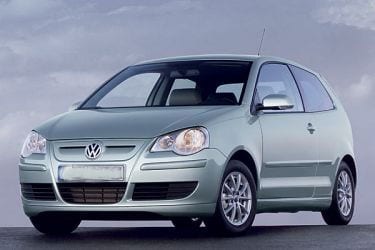 Smart Driving
Smart Driving
Under-inflated tyres cost UK Motorists £1 Billion a year in higher fuel bills and reduced tyre life.
Collect a selection of new car brochures. Working in groups, compare two chosen cars for fuel efficiency. Then discuss what factors the pupils think will affect fuel efficiency. These could include: the pressure of the air in the tyres and their fuel efficiency, ability of synthetic fuels to increase fuel efficiency and the role of air resistance in the fuel efficiency of vehicles.
Here is an activity which explores these effects.
1. How does the pressure of the air in a ball affect its speed when rolled across the floor?
Materials (per group)
Beach ball
3 metre sticks or 2 metre sticks and a tape measure
Pump for inflating balls
Stopwatch

Figures 1 & 2 – Ball on ramp and one way of making a ramp
Method
Demonstrate how to use the pump to add air to the balls. Show the pupils how air can be released from the ball by squeezing the valve. We found that the best way to launch the ball was using a ramp made from two parallel metre sticks attached to a stool as shown (Figures 1 and 2). The crossbar of the stool was about 25 cm from the floor.
Ask pupils what they should measure and which variables need to be controlled. Either the time to travel a particular distance or the distance travelled by the ball once it leaves the foot of the ramp can be recorded. We found the latter to be easier.
Pupils should fully inflate the balls then release them, measuring as appropriate. It is best to release the ball five times and take an average measurement if the pupils are able to do so. They should then release some air from the ball and repeat the experiment. Note that if they release too much air, the ball may not move down the ramp.
The results should show that the lower the air pressure, the slower the ball moves. With higher air pressure, the ball should roll faster and hence travel further from the foot of the ramp before stopping.
With lower air pressure the ball has a greater rolling resistance. The same thing happens with car tyres and is responsible for cars with under-inflated tyres using more fuel. (Over-inflated tyres have poor grip and make the car’s ride very harsh). Pupils could ask parents if they have a tyre pressure gauge and how often the tyre pressure is checked on the family car. What are the recommended tyre pressures for the tyres on the cars? Are they all the same? Why might they be different? Many manufacturers are producing special economy versions of their cars, for example the VW Polo Bluemotion (see photo at the start of this article). These have low rolling resistance tyres fitted as standard.
Notes:
We tried using a football instead of a beach ball but were unable to get convincing results. If you can lay your hands on a wheelbarrow with a pneumatic tyre, Try loading it up, for example with 10 x 2 litre plastic bottles full of water, and asking pupils to push it with the tyre inflated. Let air out of the tyre then tell them to try again. After doing this they should have no difficulty in appreciating that it takes more energy to move a car with under-inflated tyres!
Extension activity
Find out what happens to old tyres in the local area. Summarise the findings in a poster.




